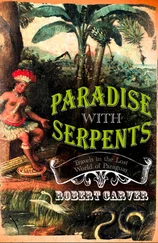I asked the obvious question.
“We’re not sure. The wool fibers were outnumbered five to one by the vehicle ones. That’s why we weren’t sure what we had, at first. There were six acrylic and one wool on Pamela, and eight acrylic and three wool on Courtney. Most of them were caught in that robe he put them in, that nylon netting.”
“Come on, Joe — cough it. What did the wool come from?”
I straightened up and looked at him. He smiled and nodded patiently. We field cops are always trying to get him to commit to something definitive and absolute, something to answer our many questions. Forensic science, of course, isn’t often that easy.
“Could be a wool blanket. Or sweater. We’ve already got wool/rayon fibers that are probably from some kind of garment — a sport coat. But a red sport coat? Not likely. Plus, the diameter of these are quite a bit thicker than the wool/rayon ones. They’re processed for softness. These would make a plush, flexible material, not something strong and tight like a jacket. So — sweater, blanket, bedspread, stadium wrap — something built to be supple and comforting.”
“A scarf or muffler?”
“Possibly.”
“Socks?”
“Not likely. Too short. Too full. They’d process them for length and tightness for footwear. My guess is they don’t come from a garment.”
I bent down and took another look. “The fiber didn’t come from the van.”
“Right.”
“Then we might have been wrong assuming the van is where he does what he does to these kids. It might not be the van at all. His rape kit could be anywhere.”
“Well, his almost-rape kit. That’s right.”
I stood up straight and let my thoughts settle. “It makes sense,” I said. “He holds them for several hours, from what we can tell. A van is safe, but it’s not comfortable and it’s not soundproof. He’s got them bound and held. There’s no bathroom, no space, no way to stand up and move around unless he’s got a van conversion. Courtney’s mom said it was a regular van, not a conversion with the extended roof. So why not just take them somewhere roomier, more like home? A bed with a nice wool bedspread on it. Or a blanket?”
“That thought crossed my mind, too. Any likely places come to mind?”
“The guest house on his property.”
“Oh, the profile.”
I looked at Joe and caught the skepticism in his gentle blue eyes. “No,” he said, sensing my argument before I made it. “I think the profiling is a good tool. Those guys are right a lot of the time. It’s just not physical evidence. This is physical evidence. All I’m saying is, what if The Horridus doesn’t have a detached guest house? Then we’re heading down the wrong path the whole time. Look at all the man-hours wasted on real estate listings. That’s all. That’s why I’m the crime lab guy and Strickley is the profile guy. It all helps. They’re all just pieces of the same puzzle.”
“Well, he’s at least got a bedroom or a living room, with something red, made out of wool, in it. And the girls are getting fibers from it on them. And when we find him, we’ll be able to match what’s in the microscope to something this guy has.”
Reilly nodded. “That’s all I’m prepared to say right now. Unless, of course—”
“—He gets rid of it.”
“Right.”
We looked at each other in a silence that grew dreadful.
“What the hell is he doing to these kids for six hours, Terry?”
I couldn’t answer so I didn’t
“There’s something else you should see.”
I began to speculate on how The Horridus might conveniently rid himself of incriminating items. Say he really was undergoing a profound change in behavior, like Strickley had predicted. Say he was selling, or already had sold, his van. Say he was going to sell his house. Why not have a garage sale, too, and shed — just like a snake — not only the skin of who he used to be, but evidence that might damn him? Why not sell the house furnished? Why not burn it down and collect his homeowner’s insurance?
I followed Joe to the counter on the other side of the room. He stopped and looked into one of the lab’s new scanning electron microscopes, then stood back and nodded to me. The magnified object was flat and triangular, with rounded corners. The two sides were just slightly longer than the base. It looked kind of like a guitar pick. Running lengthwise from the middle of the base to the peak was a thin raised ridge. It appeared rough and dusty.
“I spent some time with the netting yesterday,” he said. “I knew it was nylon, and thought it might retain some body oils when The Horridus handled it, but you know how tough plastics can be on blood — it just smears the carbon dust. Plus, how can you lift a continuous print off a mesh? I hung Courtney’s robe and Super-Glued it, just to see what might show. I was right, the cyanoacrylate hung on the prints. There wasn’t anything continuous enough to be useful, but when I was looking at the prints with the glass, I found what you just looked at in the scope. It was folded over once, along the ridge, and caught in one of the squares of the net, like a magazine folded over and put in a mailbox. I thought it was a fish scale, until I remembered Strickley’s profile. Then I thought — snake scale. So I went over the net one inch at a time, looking for more. Nothing. I did the same on the first one — Pamela’s outfit — and struck out there, too. So I took it over to Gordon Marshall at UCI and he said lizard or snake. It’s not an actual scale, it’s a shed impression. Marshall said it was a dorsal scale, from the back. The ridge is called a keel, and the scale type is called a keeled mucronate. Snakes and lizards all over the world have keeled mucronates. But the only local reptiles big enough to have a scale like that one are rattlesnakes and gopher snakes — the others are smooth — no ridge. He said this is from a big animal — maybe four or five feet long.”
“What about Crotalus horridus? ”
“Marshall said it could be. There’s no way he can identify the species without more of the shed.”
“Did The Horridus put that scale in the net?”
“Maybe. Or it could have just wedged itself in when he was making the robe. There’s just no way to say.”
I thought for a moment.
“When a snake sheds, it comes off in a long, inverted tube, doesn’t it? I used to find them in the hills, when I was a kid. It’s thin and dry, like paper.”
“I think so, yes.”
“Then how did one scale get removed?”
Joe’s peaceful blue eyes scanned my face and he nodded. “We need to run it through the ALS.”
“I think we do.”
I could feel the thrill of the hunt as Joe prepared the scale for Alternative Light Source. First, he held it with a pair of fine tweezers and ran an open tube of Super Glue near one side. Super Glue emits cyanoacrylate gas, which reacts to body oils and turns white — a process for finding latent prints that was discovered by accident in a U.S. Army crime lab in Japan. Because the scale was relatively small — about the size of the end of a pencil eraser — we’d need to hit it with the ALS to isolate the print, if there was one. Joe held the scale upright in the tweezers and applied the ALS, adjusting the light wavelengths.
“Nice,” he said. “Very nice.”
I stuck my head right beside his for a view of the scale. And there, illuminated in the ALS, I could see the white outlines of the friction ridges — part of a fingerprint.
“We’ve got a bifurcating ridge ending and two minutiae points,” he said, his voice hardly more than a whisper now. “The minutiae points are the gold. This is good, Terry. It will help us in court.”
“But what about now? ”
Читать дальше
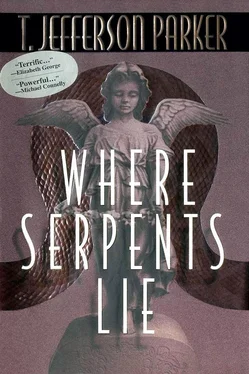


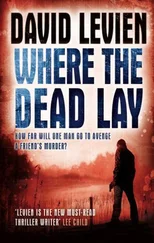
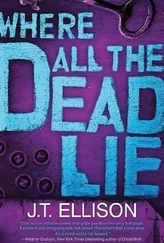
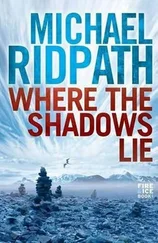
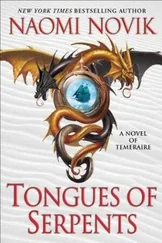

![Джеффри Дивер - Where the Evidence Lies [A Lincoln Rhyme Short Story]](/books/403782/dzheffri-diver-where-the-evidence-lies-a-lincoln-r-thumb.webp)

